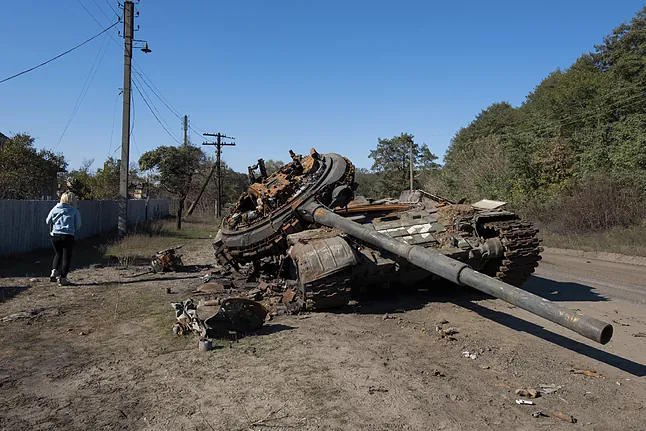Approaching the fourth year of war, which will be completed on February 24, 2026, if no one ends the slaughter before then, Russia is beginning to scrape the bottom of the barrel. The gigantic reserves of armored vehicles left by the fall of the Soviet Union are running out, as experts analyzing satellite images have been predicting for years, studying every image of those outdoor storage areas throughout the vast Russian geography.
The numbers of this wear and tear, proven by open-source analysis (Oryx), are devastating: 4,084 tanks lost out of a total of 13,103 armored vehicles of all types that have gone into oblivion, a gigantic scrapyard that can only be compared to that produced throughout the entire Second World War. Not even in major tank battles like Kursk did armies lose as many armored vehicles as Russia has during this invasion.
"While both sides have lost large amounts of equipment, recent analysis suggests that Russia will struggle to deliver enough equipment to the front to compensate for previous wear rates," reports Newsweek. This conflict has resulted in the greatest depletion of Russia's military equipment in 80 years at an unprecedented rate. Moscow had around 2,987 operational tanks when the invasion began.
Furthermore, analysts believe that 10% to 15% of the losses remain hidden because they have not been filmed or published, meaning the numbers should be even higher. The reality is that the access roads to the front are a graveyard of Russian, Ukrainian, and to a lesser extent Western armored vehicles.
In the armament depots, armored vehicles have been gradually decreasing since the start of the Russian invasion until today. Initially, the more modern models were recovered, which require lower update costs. In other words, the first to disappear on their way to the front were the latest versions of the T72 and T80 models, such as the T72B Mod.1989 or the T80 U. Some of them have already been completely depleted.
Satellite images show these fields still with dozens of rusted vehicles. Therefore, even if they are not empty, "it is very likely that the remaining Russian equipment stored is in deteriorated conditions, which may hinder Russia from delivering enough equipment to compensate for previous wear rates," as reported by the International Institute for Strategic Studies.
In recent months, due to the scarcity of the most current models, Russian authorities have had to resort to using T72 Ural tanks, a version from the 1970s whose units are in very poor condition and require much more time and money for their update. Additionally, Russia has also reintroduced thousands of T62 and T55 models, designed immediately after the Second World War, very obsolete equipment. According to data from the KSE Institute, armored shipments near Russia's main storage facilities will decrease from a peak of 242,000 tons in 2022 to 119,000 tons in 2025.
Do these figures mean that Russia has run out of tanks? Although the reserves are nearly depleted, Russia has stopped using tanks massively on the front lines to preserve those they already have, in addition to the ones they can manufacture each year, around 300 units, which are new versions of their T-90, the most modern tank in their arsenal, insufficient to offset the losses.
However, some analysts advise against interpreting the reduction in armored vehicle deliveries on the front lines as a definitive sign that Russian forces are "losing combat effectiveness," according to the Financial Times. "Russia is running out of weapons from the Soviet era while North Korea fills the void," the newspaper reports. Moscow's allies are beginning to send large-scale weaponry to Russia to compensate for the enormous wear suffered by Z troops. It is estimated that Pyongyang already supplies a third of all artillery ammunition consumed by Russia on the battlefield. Kyrylo Budanov, head of military intelligence of Ukraine, states that these deliveries are even greater: "North Korea supplied 40% of Russia's ammunition".
But the war has changed. If the use of tanks and infantry fighting vehicles was the main weapon of the Russians during 2022 and 2023, gradually, as losses increased, the Russian army has shifted towards tactics that combine the use of drones and assaults with motorcycles, golf carts, or infantry units to penetrate the overstretched defenses of Ukraine. Beyond the losses, which are the highest of the war, Ukrainian defenders themselves acknowledge some effectiveness in these tactics, allowing Russia to advance in some areas of the front and at least preserve the armored reserve it has left.
In the last month, only one armored assault has been seen in the Donbas, with the same result as the vast majority in this invasion: drones locate the target before reaching the combat lines and are eliminated within minutes with artillery and kamikaze drones.
The tank is disappearing at a rapid pace.
